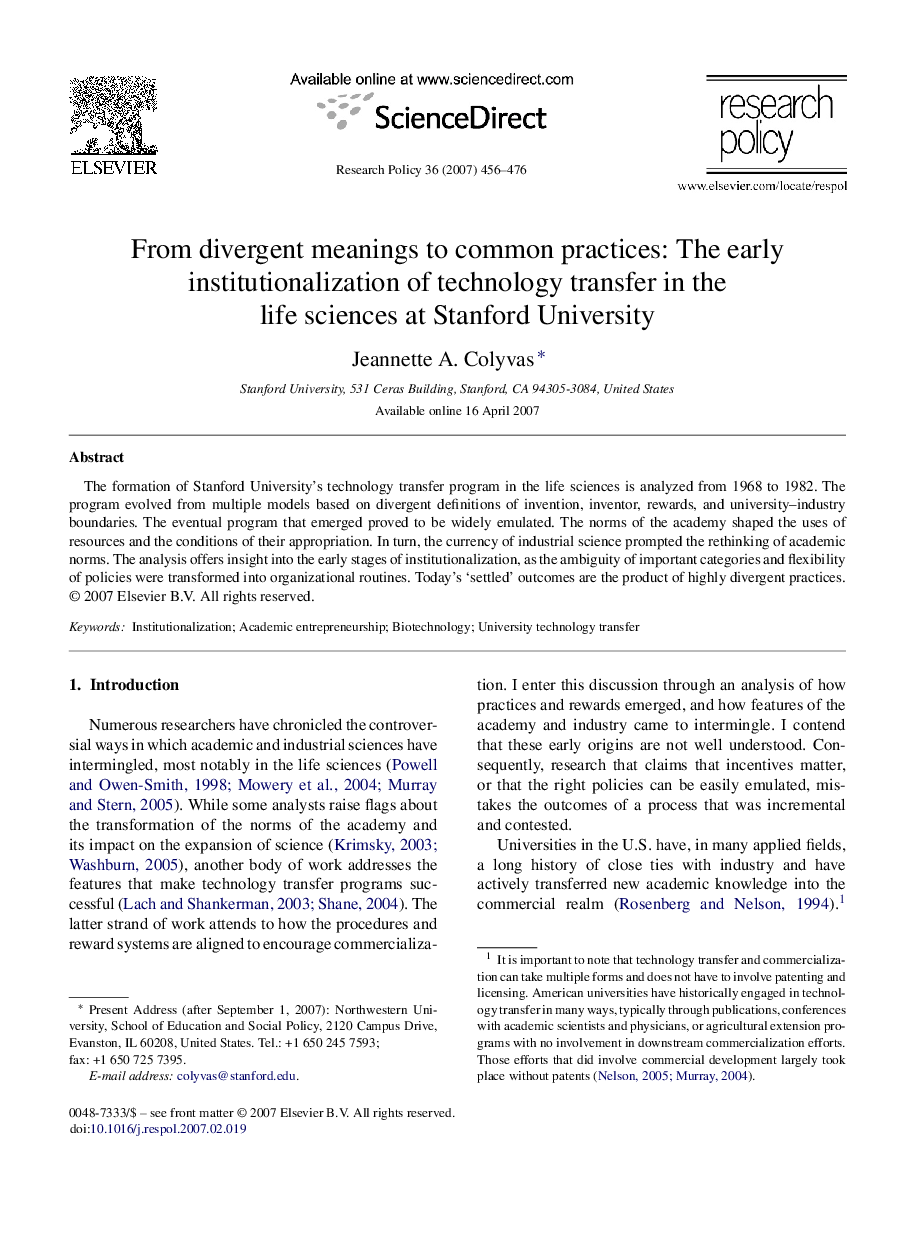| Article ID | Journal | Published Year | Pages | File Type |
|---|---|---|---|---|
| 984309 | Research Policy | 2007 | 21 Pages |
The formation of Stanford University's technology transfer program in the life sciences is analyzed from 1968 to 1982. The program evolved from multiple models based on divergent definitions of invention, inventor, rewards, and university–industry boundaries. The eventual program that emerged proved to be widely emulated. The norms of the academy shaped the uses of resources and the conditions of their appropriation. In turn, the currency of industrial science prompted the rethinking of academic norms. The analysis offers insight into the early stages of institutionalization, as the ambiguity of important categories and flexibility of policies were transformed into organizational routines. Today's ‘settled’ outcomes are the product of highly divergent practices.
